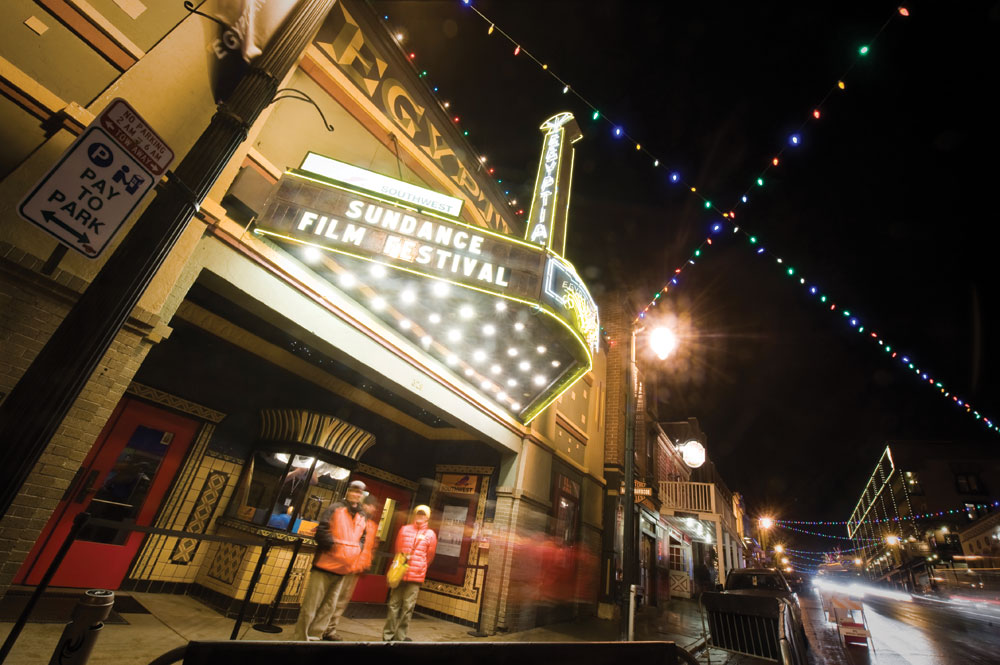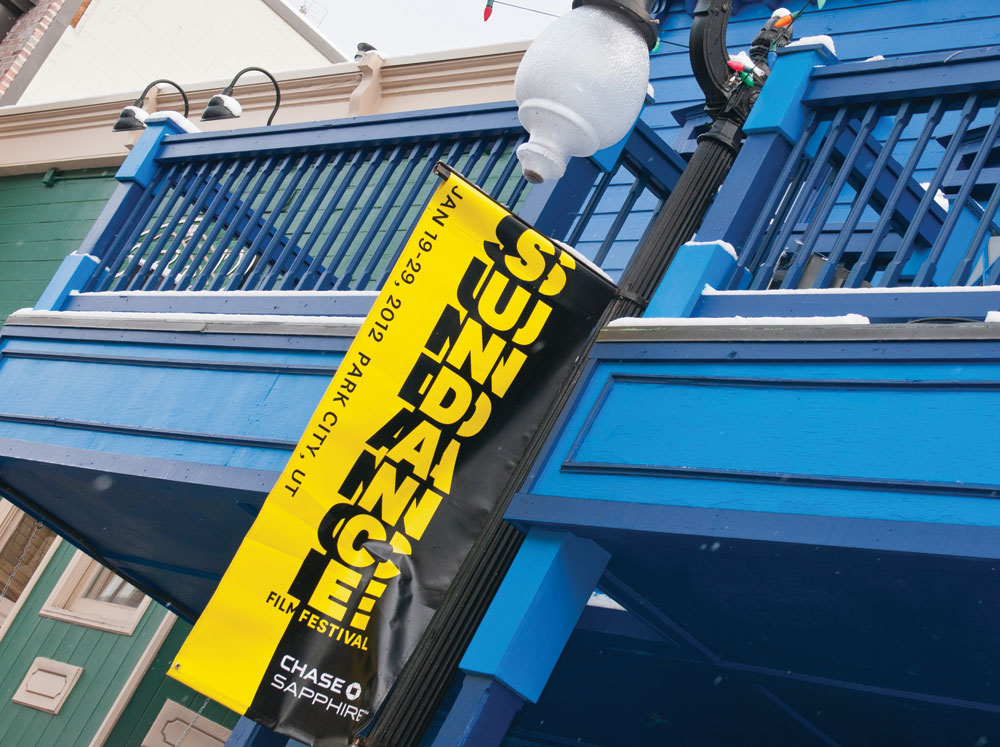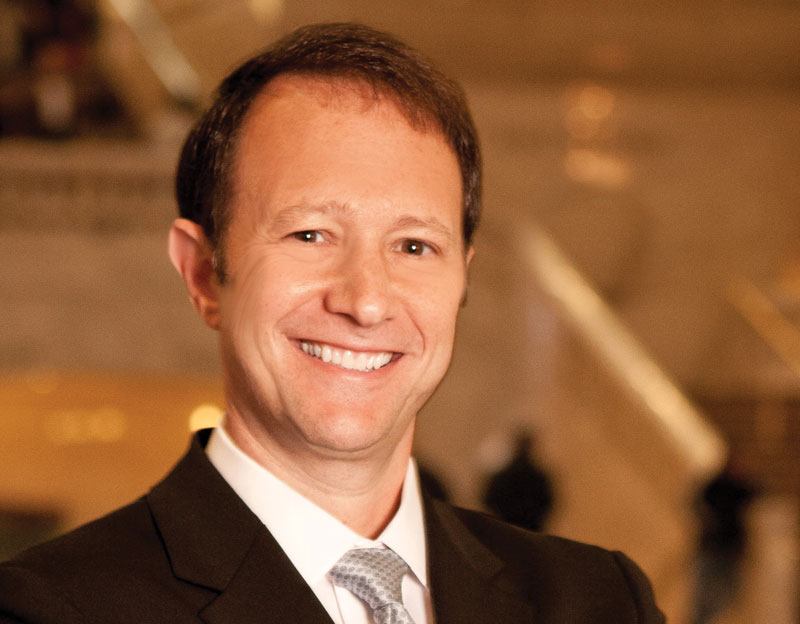
After more than 35 years of operation, TBI is closing its doors and our website will no longer be updated daily. Thank you for all of your support.
Robert Redford: an independent man
The founder of the Sundance Institute, Sundance Channel and Sundance Film Festival, Robert Redford is the A-lister who has done more than any of his peers to support indie filmmakng. The actor, producer, director and Sundance founder talked to TBI about the TV and film industry and how Sundance and its various activities will evolve.
With a list of on-screen and production credits that includes Butch Cassidy and the Sundance Kid, The Sting and The Horse Whisperer as well as indie-minded offerings including Downhill Racer and The Candidate, film is clearly Robert Redford’s first love: “I like the idea of being in an exhibition where a lot of people gather in a room where it gets dark and you have the energy of each other, rather than just watching a screen in your own living room,” he says. But with the Sundance Channel and Sundance Productions, Redford’s small screen activities are clearly moving to a new level. Part of that is because of the slew of creator-driven work, particularly on US cable TV, which means the quality and tone of new TV projects have the energy and sensibility that was once the preserve of indie cinema.
“I agree that TV is like the new indie and we’re exploring that with what we’re doing with the channel and Sundance Productions,” he says. “I think in many ways there are more interesting things going on, on TV than on the big screen. Television has become so creative and because of the internet it’s possible to have shorts and feature documentaries and so forth [online], so there are more opportunities, because at the same time film has become more restrictive.”
Redford formed Sundance Productions with his producing partner and former Discovery executive Laura Michalchyshyn last April (separately he has a movie production banner, Wildwood). The freshly-minted production unit will make scripted and factual programming and shorts. Its first projects include Valentines, a TV adaptation of the Olaf Olafsson novel about a successful US attorney and his family, which Redford will produce. The series will be on Sundance Channel.
There is also All the President’s Men Revisited, a two-hour documentary for Discovery Channel that will take a look at the Watergate scandal 40 years on and in the wake of Redford’s classic 1976 movie about those events. He will narrate and have a hands-on role in the doc, which will debut later this year.
“Creatively I am in the Watergate thing because I have to be,” he says. “There’s Dustin [Hoffman] and [former Washington Post editor] Ben Bradlee and [Washington Post journalists] Carl Bernstein and Bob Woodward, who are now who we are and the age we are, and we look back on ourselves then. We look at events in the 1970s and how that moment received so much attention and created such a heroic image for journalism. Maybe that can only be looked at as a moment in time, like a museum piece because things have changed too much to ever repeat that, but we just look at it and let the audience decide.”
Another project that Redford’s new production firm is working on is an epic drama about the American West, Blood and Thunder.
The scripted series will tell the story of Kit Carson, a real-life adventurer and frontiersman in the 19th century American West who married into a native-American tribe.
“I agree that TV is like the new indie and we’re exploring that with what we’re doing with the channel and Sundance Productions…
I think in many ways there are more interesting things going on, on TV than on the big screen…”
“It’s the story of how the American West was developed and there are some wonderful characters there from [explorer and military officer] John C. Fremont to [US senator] Thomas Benton, all these major characters that literally shaped the Manifest Destiny of the West. This tells that story, and you can have that as a series.”
Redford has worked in TV before. He exec-produced HBO TV movie Grand Avenue in the 1990s and had the same role on the first episode of Skinwalkers, the PBS native American cop drama based on the Tony Hillerman novel (the script was written by his son Jamie).
Redford says he is not planning to be on screen in the Sundance Productions projects because he is focused on his film work including A Walk in the Woods, the upcoming movie based on the eponymous Bill Bryson book that he will star in alongside Nick Nolte. However, Blood and Thunder might tempt the Hollywood star to appear on screen: “There are several roles in there that would be fun to do,” he says.
With the Institute, the Festival, the channel and the production division, Sundance has grown out of all proportion to its humble beginnings. The first iteration of the festival in the mid-1980s saw Redford standing outside movie theatres hustling to get members of the public to come in and see indie films. Redford’s vision has allowed all of the subsequent growth and creatively he remains the driving force, but the advent of Sundance as a brand does not sit comfortably with the star.
“I’ll tell you what’s really getting hard, it’s when people talk about Sundance being a brand, its really weird for me,” he says. “For me a brand is something you put on cattle. That’s how I translate it in my head and it is a very hard thing for me to adjust to. I don’t see myself as a good businessman at all because I am too creative-minded, too attracted to risk and that doesn’t make for good business. I can’t say I am unhappy about the fact there is a business that has developed around that, but that has to do with other people, not me.”
FIRING UP THE SUNDANCE FESTIVAL
A cornerstone of Sundance’s activity is the Festival, held annually in Park City. But can an event that has grown from 25 films and 150 people to many thousands watching a slew of movies from around the world retain the indie aesthetic that helped it become such a success and in turn reinvigorate an entire section of the entertainment industry?
“What it was always meant to be was not a place for Hollywood premieres. There are no black tie events, no red carpets and no limousines allowed. When we first started it was just filmmakers and for the first couple of years no distributors came until Sex Lies and Videotape [in 1989]. Then they suddenly went ‘whoa, what’s going on there?’ Suddenly you have the Harvey Weinsteins coming and then they bid big dough and then things like Fox Searchlight were created.
“At the same time blockbuster films were being made out of Hollywood, but actors were not getting the same quality of roles and gravitated toward independent films. Once they were in those films, then they would come and then the papparazi came and fashion came and then these tiers develop and pretty soon you have Paris Hilton there, who has nothing to do with anything.”
Despite the huge growth of the festival, Redford is adamant that it should expand in as organic a manner as possible. International movies were only added to the mix in the mid-90s and the idea of taking it beyond the US made him nervous: “I have seen too many examples of what happens when people try to get too big with an independent idea, an idea that’s very different, and they try to expand on it too much because of greed or whatever, and lose it,” he says.
However, with potential partners beating a path to Sundance’s door, the first launch outside the US finally happened in 2012 with Sundance London, a four-day event run with events and entertainment company AEG, which owns The O2 Arena where the event was held.
“I said ‘we’ll do it, but we’ll only do it if we can do it as an experiment’,” Redford explains. “We’ll treat it like a toe-in-the-water experience and if it doesn’t really work then nobody gets hurt.”
Having Redford’s connections helped. He says: “I felt we did what we said we would do and the response was great. I connected to His Royal Highness Prince Charles. I’d already had a relationship with him based on our mutual concerns about the environment, so I invited him and we showed a documentary he’d made about the environment.
“It turned out to be more successful than I had imagined and the attendance was so much higher than AEG imagined that they wanted to do it again. It will run a little bit longer; they will give us more money to do a bit more and so the whole thing expands just a little bit.”
The result is two more years of Sundance London. Has the UK experience convinced Redford that the Festival could have a life in other countries?
He says: “We have to be careful about expanding too quickly. I think you start small, that’s how Sundance started, everything about Sundance started tiny, like a grain of sand. It has to be organic. It has given me confidence to do it elsewhere, but that confidence scares me, it’s a very dangerous thing to have, but I am interested in doing that because of the [London] success and because of the invitations we’ve been receiving from other parts of the world. The part that interests me most is Brazil: I think Rio would be a very good place to go.”
How it almost never happened…
Had Redford listened to his closest advisors the US Festival and its international expansion would never have happened. Its subsequent success is a testament to the star’s commitment to grass-roots filmmaking. The money men surrounding the actor, whose estimated net worth is US$170 million, tried to stop him doing it and could not understand why, when he was making so much money from movies, he would do something not for profit.
“We fought and fought and I did it, I set up the Institute and when I saw no place for the films to be released I set up the Festival…and then they really got upset,” Redford explains. “So they came to Sundance and they cornered me and tried to start an intervention like I was insane, like I was a madman who needed to be controlled.”
Eventually a compromise was reached between Redford and his advisors, but the star then had to prove Sundance was a viable proposition, and the clock was ticking.
He says: “We made a deal. I said: ‘I don’t want you to think I am completely mad, just give me three years and if this doesn’t work I’ll leave it’, and they said ‘OK, but no more than three years’. Then in the first year we had 25 film and some filmmakers came, wondering what was going on; there were maybe 150 people wandering the streets and me and two other people who were starting this were standing outside the theatre trying to get people to come in. I was a real hustler.”
CHANNELLING SUNDANCE
While the Sundance Institute is a not for profit organisation, the Sundance Channel is owned by the Nasdaq-listed AMC Networks channels group. Launched in 1996 as a joint venture, it was acquired by Rainbow Media in 2008. Now it is part of AMC Networks and the man charged with taking the channel around the world is Bruce Tuchman. It helps that he has already done the same with the MGM Channel, where he spent over a decade before becoming president, AMC/Sundance Channel Global in late 2011.
In recent months the channel has rolled out on Digiturk, marking its entry into the Turkish market, and on the Cyfrowy Polsat and Toya platforms in Poland. In 2012 it inked carriage deals with pay TV platforms in France, the Netherlands, Spain, Belgium and Portugal as well as setting up an Asian office in Hong Kong.
In programming terms, the Sundance Channel has been getting closer to the Festival with events like 10 Days of Sundance, featuring festival favourite movies. The movies have to be acquired on regular commercial terms; there is no guarantee that the titles from the festival line-up will make it to the Sundance Channel. From this year’s Festival line-up, for example, the channel picked up three titles: California Solo, Father’s Chair and L.
For Sundance London there was exclusive on-the-ground coverage as part of a first-of-its-kind collaboration between Sundance Channel and Sundance Institute, and the young producers programme recently established by Shine Group and youth agency Livity.
“If anything, I’m more bullish about the prospects for Sundance Channel now than when I joined and as we refine the positioning of the channel we see more of an untapped opportunity,” Tuchman says.
Clearly, access to content is a pressing issue. In the US AMC runs perhaps the three hottest cable shows of the moment: Breaking Bad, Mad Men and The Walking Dead. Each is distributed by a third party, meaning Tuchman’s team need to cut deals for the shows to get them on the international Sundance Channel. Accordingly, Mad Men and The Walking Dead have been on the international services, but not always in the first pay TV window.
However, AMC is committed to producing more and more of its own content and Tuchman says that going forward it will increasingly get the best content in better windows. “In Asia we have Breaking Bad in the first window and that generates an immediate impact, buzz and awareness,” he says. “More and more as we go forward, and as [AMC Networks] produces new shows, we will see first-window activity.”
As the international penetration of the channel increases, so does its leverage in terms of access to the best content from the US mother ship, and in the best windows.
Tuchman says: “Due consideration is given at AMC Networks to how programming is provided to the international channels because that business has got bigger and is growing fast. It’s a different scenario to seven years ago when some of these [AMC] shows were conceived. In terms of contributing to the funding of new production, we are getting to the point in key territories where we can provide meaningful economics.”
In an era when pay TV operators are focused on quality, not quantity of channels, having a brand like Sundance and the support of Robert Redford helps break through the clutter and to compete with the huge, established channel operating groups.
Redford is clearly very supportive of the channel, turning out to meet Spanish journalists at a press event in Madrid when TBI interviewed him, before heading on to Turkey for the inaugural roll out of the channel in that territory.
2013 is, Tuchman notes, about further expansion of the channel. “It’s full steam ahead and we will develop and expand the channel and move into new markets that make sense for us – as well as looking at what’s going on in our existing markets and developing and refining the positioning there,” he says.







